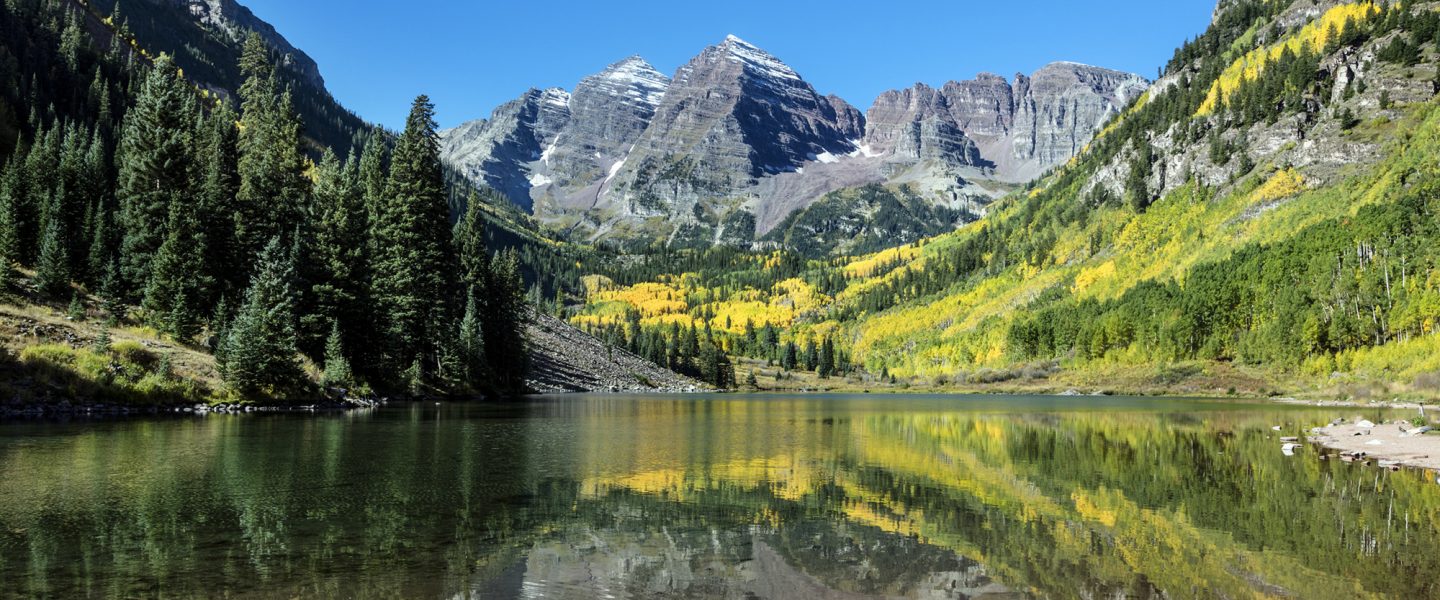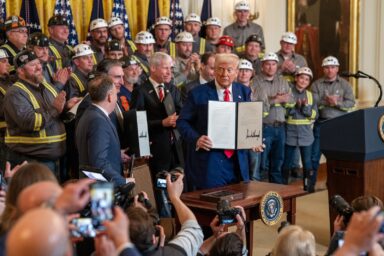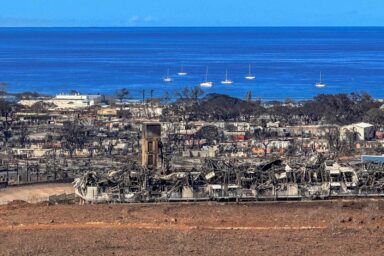It’s Getting Harder to Go Off Grid
If nature doesn’t get you, climate anxiety will.
|
Listen To This Story
|
A few weeks ago someone hiking in the Gunnison National Forest in Colorado found a decomposed body outside a remote campsite in the Rocky Mountains, and reported the grim discovery to authorities. Investigators traveled to the site and found two more bodies.
They were identified as the remains of Rebecca Vance, 42, her 14-year-old son, and her sister, Christine Vance, 41.
According to The New York Times, Rebecca Vance had told her step-sister, Trevala Jara, that “she could grow and gather her own food in a remote place, that she and her teenage son could be happy and safe away from the news, the viruses, the politics of modern-day America.”
“The news,” these days, is a lot about the climate emergency.
It’s thought the trio didn’t make it through the winter.
Found at their campsite were empty cans of food and a single ramen packet — arguably demonstrating a family that weren’t equipped to live off the land. It’s tantamount to attempting to sail across the Atlantic without the necessary skills or appropriate boat.
The concept of living “off grid” goes back to the dawn of the industrial revolution. In 1854, Henry David Thoreau popularized the idea with his record of living a year by Walden Pond in Concord, MA. Even then, he complained of the clatter of the railroad that traversed the edge of the forest. (It still does; I often take the train to visit my mother in Concord, and you have a good view of the pond from the train.)
In the 1940s, writer Henry Miller followed a decade of living in the hurly-burly of Paris with a move to remote Big Sur on the California coast. He described “skies of pure azure and walls of fog moving in and out of the canyons with invisible feet, hills in winter of emerald green and in summer mountain upon mountain of pure gold.” He reveled in “the unfathomable silence of the forest, the blazing immensity of the Pacific, days drenched with sun and nights spangled with stars.”
In the early 1960s, Leonard Cohen lived amongst a group of bohemian exiles on the island of Hydra. It was not the remotest outpost, but a small society free of telephones, cars, and work demands.
Each one of these treasured locations has recently incurred the wrath of climate change.
The urge to leave civilization and its defacement of nature and civil discourse is an understandable one. “Climate anxiety” is a growing problem, especially among the young, with people feeling powerless in the face of this existential threat to their future.
Walden Pond has seen the water quality and plankton community changed by warming and human overuse of the pond and the woods that surround it.
Although the scenic mountains and picturesque Pacific survive from Miller’s day, access to them has proved challenging after multiple climate-related landslides in Big Sur have blocked its major access road, Highway 1.
And this summer Hydra and several other Greek islands have seen temperatures soaring to 45 degrees Celsius (113 degrees Fahrenheit), with many islands suffering their worst brush fires in history.
Though the braying of social media and the fear of crime may be eluded to some extent in a far-flung location, climate change doesn’t magically disappear the further you get from the city. But even a relatively normal winter in remote Colorado can humble the unprepared camper.
The urge to leave civilization and its defacement of nature and civil discourse is an understandable one. “Climate anxiety” is a growing problem, especially among the young, with people feeling powerless in the face of this existential threat to their future.
A 2021 survey found that of 10,000 young people aged 16–25 from countries in the Global South and North, 77 percent said “the future is frightening.” 68 percent felt sad, and 63 percent felt anxious. Thirty-nine percent even felt “hesitant to have children.”
One can only assume this anxiety has increased in the intervening two years.
According to The New Yorker, the Climate Psychiatry Alliance lists over 300 “climate-aware” therapists, “practitioners who recognize climate change as a major cause of distress and have developed methods for discussing and treating it.”
After growing up in a conservative, Fox News-watching Florida family, Tim Wehage went to college where he learned the truth about climate change, and it had all but paralyzed his lifestyle after he moved to Seattle.
“For years, you read all the articles,” Wehage told The New Yorker. “You look at pictures of the pollution, you think about the greed that fuels it, and you feel upset. But then, when you’re there, you understand that it’s so much worse than anything you could read.”
Wehage essentially tried to go off grid in the city, eschewing a car, becoming vegan, and trying to pick up litter he found on walks through the city.
But his severe climate-related depression led him to seek psychiatric help, which eventually made him feel less overwhelmed and more hopeful. He was encouraged to reach out to a community and consider what he could do individually and as part of a group.
If you’re not worried about climate change — especially in this alarming summer of Biblical weather extremes — you’re not engaging with the reality of our situation as inhabitants of an earth we are actively destroying.
Even a normal winter in the mountains can be deadly (witness the Donner Party). But climate change has affected the Rocky Mountain National Park, with increased temperatures leading to an earlier spring, less water runoff, and dryer conditions, making the area rife for brush fires. There are more invasive plant species and less food for the native wildlife.
But you shouldn’t have to move to what seem like the ends of the earth, because there are no ends anymore. There are things to do to combat the climate emergency, and when you feel too depressed to act, there’s therapeutic help out there as well.
The Vances died in the wilderness trying to make a break from their fears of what our civilized world had become. But from our universal predicament of the climate emergency, there is sadly little escape.
—
J.B. Miller is an American writer living in England, and is the author of My Life in Action Painting and The Satanic Nurses and Other Literary Parodies.





